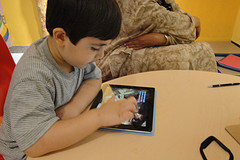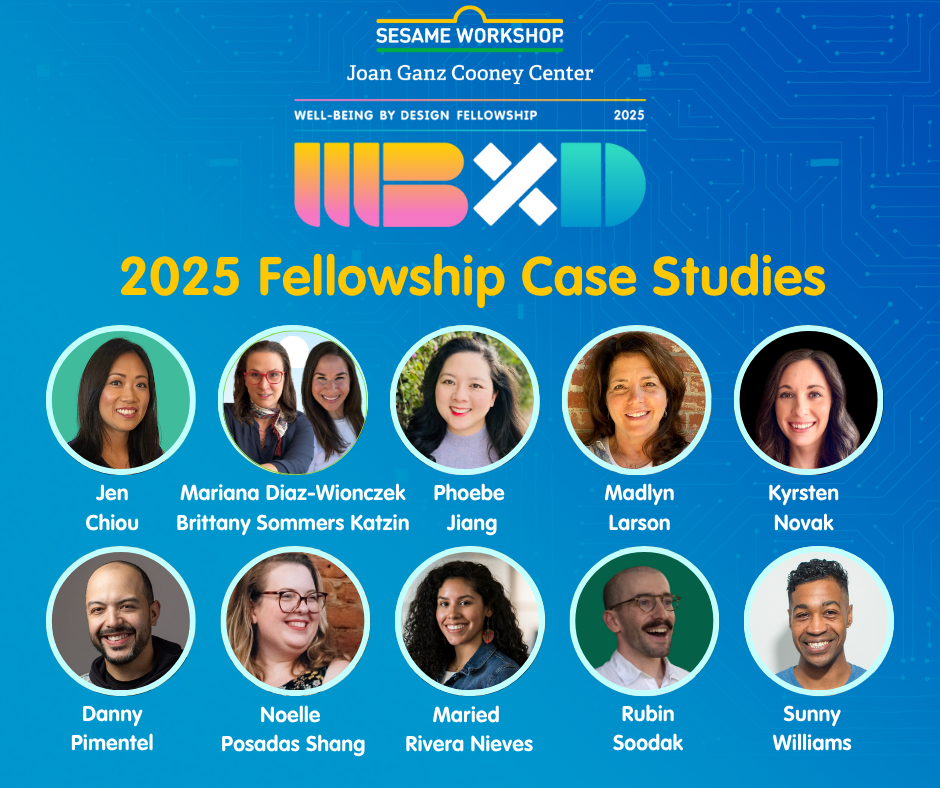 In January, we introduced Cooney Center Research Associate Cynthia Chiong’s new website, A Matter of App, in which she rates educational apps for children. Fifty reviews later, she shares what she has learned along the way.
In January, we introduced Cooney Center Research Associate Cynthia Chiong’s new website, A Matter of App, in which she rates educational apps for children. Fifty reviews later, she shares what she has learned along the way.
THE BIG 5-0. Fifty reviews, that is. Woo-hoo! This has been quite a learning process for me. I started out with the goal of seeing what’s out there in the app world for kids, and I must admit that my goal has shifted a bit now to seeing what I want to be out there. As a result, I’ve been setting the bar higher. I’ve barely given out any 5 star ratings — just five in all. I’d love to be giving out more! So instead of doing a “best of” list to celebrate the big 5-0, I thought I’d do more of a Top 5 Wish List — things I’d like to see more of:
Apps that are more than just drill. Understandably, drill material like basic math problems, or sight word lists are easy to translate over to the digital world. The content is ready and available — slap it onto some sort of game environment and voila. I’m not trying to demean the importance of drilling or even the effort it takes to create such an app, but just having kids memorize, say math facts, will not lead to great math skills. Specifically with math, we need to teach strategies and help kids build a good foundation. Tablets have the potential to convey strategy information in a great hands-on way. They can tap on objects, group them, drag them to compare, and more. We can include useful references like number lines and even a base-10 tool. Let’s create apps that make kids practice specific skills and leads them to understand the strategy and or reasoning behind them.
Apps that target the full spectrum. With most subjects, there’s usually a progression of to-be-learned skills and concepts. Let’s take reading for example. Our goal is not just to teach kids the alphabet or even just how to read, but to also teach them to understand what they are reading. That’s what it’s about in the end. So sure, letter knowledge and phonics are important initial steps, but what about the latter steps like vocabulary and comprehension? I’ve seen many apps targeting the former but much fewer targeting the latter. And I don’t mean just flashcards or sight word recognition for vocabulary. Again, drilling phonics or sight words is important, but let’s take it to the next step. Kids learn vocabulary best when within a context or theme, which then helps comprehension. Apps need to target skills further down the spectrum in meaningful ways.
Apps that involve parents. Regular readers of my blog know that this is something I would like to see more of. I’ve definitely started to see a trend of reporting systems for parents. This is a great start to get parents to think of apps as more than just something fun kids can do on their own. “Just-for-fun” apps certainly have their place, but I’d like parents to see the potential for apps to provide an educational opportunity. To do so, I think they need more help. I see parental involvement in three steps: 1) Review – as with the reporting systems, 2) Share – features that allow kids to share what they’ve done (i.e. saving artwork, completed tasks, etc.) so that they can continue the conversation outside of the app, 3) Link to real world – suggested activities for parents to do with their kids to reinforce concepts from the app to the real world.
More than just an app. OK, this one is harder to explain. Apps tend to cross over to other types of media — they have the ability to be different things. They can be more static, like books and videos, or more interactive, like video games. Let’s take what works best from those media. For example, often, what makes a great video game — those play- all-night-until-you-master-it-games — is the plot or narrative that goes along with it (Save the princess!). Educational app games should have that quality too. We also know from research with television that a format that makes learning more “active” — like pausing to wait for the child to answer — leads to better learning. Or, what about merging with real-life activities? The mobility of tablets allows apps to be a part of real life more so than any other media. Why can’t the iPhone become the weapon with sound effects in a game of Cowboys and Indians or be taken to the zoo as part of an app science project and used to record data?
Taming of the e-books. E-books is an area where I think we have seen a good deal of innovation. There are endless types of interactive features such as “pop-up” features, sound effects, and animation — some are pretty amazing. We are truly redefining what an “e-book” is. Of course, with the creation of all these features, we need to proceed thoughtfully. We need to ask ourselves if each feature adds to the plot and the child’s experience of the story. Does doing a puzzle after two pages of reading really add to the story? Do we really need 150 interactive spots in a 10-page book? Finding the right balance is tricky, but is truly important.
I think the app world has done a great job of translating a lot of materials we already have into the digital world. What’s next is to capitalize on the affordances of tablets to make what we already had into something different, something better.



